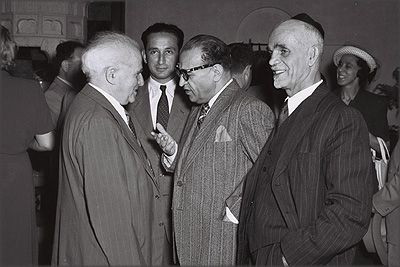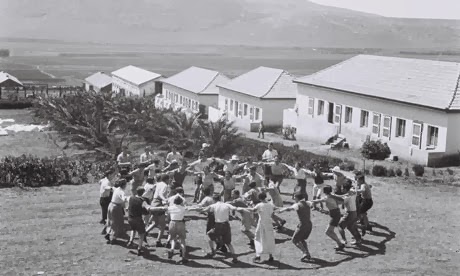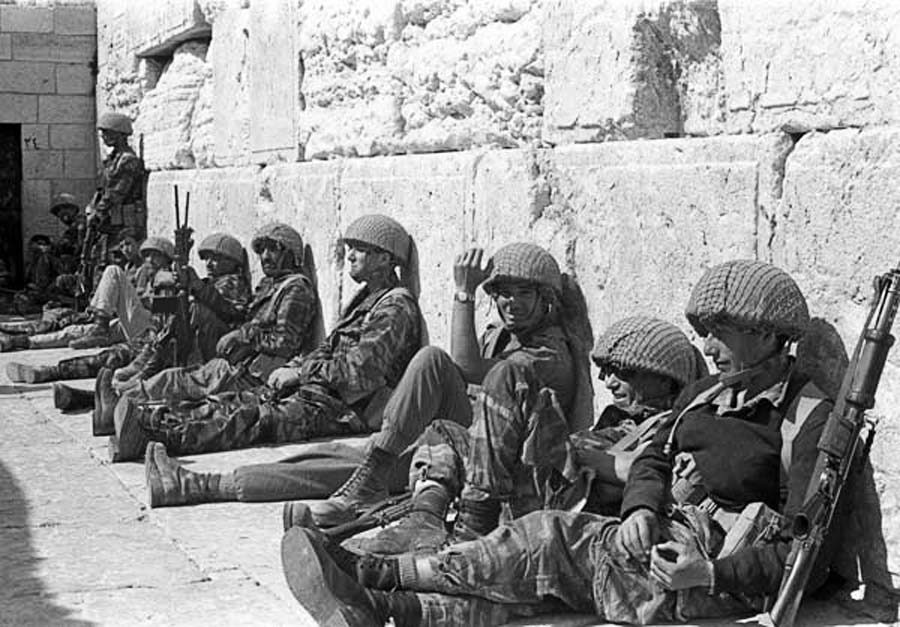Anyone following the news today could be forgiven for thinking that Iran and Israel were natural enemies and had been since the latter was established in 1948. But before Iran’s Islamic Revolution of 1979, the two nations had a close unofficial relationship that extended beyond economic and commercial ties. In 1962, Jalal Al-e Ahmad, arguably the most influential Iranian writer of the twentieth century, visited Israel on an officially sponsored visit and published a travelogue of his experience.
Guest Samuel Thrope, a writer currently based in Jerusalem, has just translated Al-e Ahmad’s Safar beh Velayat-e Ezrael into English as The Israeli Republic, a fascinating look at a time when Iranian socialists looked at Israel as a possible model for what Iran could become—and how that vision soured after the 1967 Six Day War.
Guests
 Samuel ThropeWriter and translator
Samuel ThropeWriter and translator
Hosts
 Christopher RosePostdoctoral Fellow, Institute for Historical Studies, The University of Texas at Austin
Christopher RosePostdoctoral Fellow, Institute for Historical Studies, The University of Texas at Austin
Today, we’re going to be talking about a book that you just translated from Persian into English, written by the Iranian intellectual Jalal Al-e Ahmad about his visit to Israel in the early 1960s. Can you tell us more about the relationship between Israel and Iran when he came to visit?
Like you mentioned, people today think of Israel and Iran as being natural enemies, but in the 1960’s, up to the Islamic Revolution in 1979, Israel and Iran actually had quite close relations. When the State of Israel was founded in 1948, Iran, or at least the ruling class of Iran at the time, saw itself as a a modernizing, Western-aligned country, and that orientation, that political culture, only grew stronger as Shah Mohammad Reza Pahlavi gained more power within the Iranian government. Israel also saw itself in a similar way, a modern, Western-oriented state, and the two had a natural alliance. They were both also aligned with the United States during the Cold War, so that was another source of alignment for them.
Were they actually politically aligned, or was it more of an informal relationship that they had?
It was more of an informal relationship—I mean, there was mutual interest, but Iran never formally recognized the State of Israel, even though there was an unofficial Israeli embassy in Tehran. The two countries had very close commercial and military ties. Israel sold weapons to Iran, Israeli military advisors provided advice to the shah on numerous political matters, helped with the SAVAK, which was the secret police in Iran at the time, and the Iranians sold oil to Israel.

For those who aren’t familiar with Iranian intellectual history, can you tell us a little more about Jalal Al-e Ahmad and who he was in the greater scheme of Iranian literary thought?
Al-e Ahmad himself was born in Tehran in 1923, and he actually came from a religious family even though in his youth he turned to the Communist party, the Tudeh party, in Iran. Al-e Ahmad began his writing career as part of this Communist movement, writing for its magazines and editing for them as well. His career really took off, and he became more prominent, during the 1950s and especially the 1960s. He wrote novels, essays, travelogues, and short stories. He translated a number of important writers from French into Persian, including Sartre. He became best known in Iran, and is most famous today, for an essay that he wrote called Occidentosis, or Westernization, that came out in 1962. This essay, like the name implies, was an argument, kind of a forceful argument, against westernization within Iran. Al-e Ahmad thought that Iranians needed to return to their cultural roots, not to adopt western styles, not to mimic culture they saw coming from the west. An important part of that book, and one that is important in the history of the Islamic revolution, was that Al-e Ahmad said that Shi’a Islam was an important aspect of the Iranian culture that, he argues, the country should return to.
If I remember correctly, the book you mentioned—Occidentosis—I’ve seen several titles, I think the one that I’m familiar with is Westoxification, either way the title definitely gives you the impression that the west is bad—it got a lot of press after the Islamic revolution in 1979 as sort of a key document that was produced to demonstrate that the Iranians were not big fans of the United States.
Right, even Ayatollah Khomeini referred to this Persian expression, this neologism that Al-e Ahmad used; he wasn’t the first to use it, but he was the one who popularized it. So, Khomeini used it in his speeches as a way of talking about the new direction that Iran should move in.
So, how did you come to discover that he had written a book about Israel, and how did you go from discovery to translating and publishing?
It’s funny: I knew about this book before I knew about the book, so to speak. I first heard about Al-e Ahmad’s book and his trip to Israel a couple of years ago in a lecture at Tel Aviv University, but I had actually discovered Al-e Ahmad years before when I was studying Persian at Berkeley, where I did my PhD. It took a long time after I first heard about Al-e Ahmad’s trip to Israel and began reading more widely about what he had written, and commentaries on his life and his importance within Iranian history, and I made the connection to having studied him, I dunno, ten years ago in my first semester of Persian literature.
From hearing him in that first lecture in Tel Aviv, I was so enraptured and curious about what this text could be that I ended up translating a section, and then publishing it, and then my publisher became interested and they asked me to do the whole thing.
Just out of total curiosity, is the book in print in Iran today?
Yes, it absolutely is—
—is it? OK—
yeah, the edition I have is from three or four years ago. Al-e Ahmad is a major writer in 20th century Iranian literature, it’s hard to overstate his importance. All of his books are still in print, including this one.
Can you briefly explain the circumstances that brought him to Israel? What was he looking to find there?
Al-e Ahmad’s first encounter with Israel, about twenty years before he went on his visit, came in 1948. That’s the year that Israel was founded, but in Iran it was the year of a split within the Iranian Communist party, the Tudeh party, along Stalinist lines. He and others began looking for non-Stalinist and non-Soviet models for socialism, and it was in the course of that searching that they discovered the kibbutz. These Israeli agricultural cooperatives which became a symbol of Israeli socialism and Israeli society when the state was founded. Al-e Ahmad was really excited and intrigued by this Israeli agricultural experiment and he started to read everything that he could get his hands on about Israel, which I assume was not so much in Tehran in those days. He read the Bible, also, he read the transcripts of the Nuremberg trials, etc.

Over the years, because of his reading and because of this interest, Al-e Ahmad also made contact with members of the Israeli diplomatic mission in Tehran. He doesn’t mention this in the book, but we know from other sources—from his letters, and from documents in the Israel National Archives—that Al-e Ahmad became quite close to some of the Israeli diplomats in Tehran at the time. They were part of the same social groups, they would meet at parties, they would exchange letters. I don’t want to overstate the connection, but Al-e Ahmad refers to these diplomats by their first names and is clearly on a friendly basis with them. So, his trip, which was an official trip sponsored by the Israeli government, came about because of these connections. At the time, in the sixties, the unofficial Israeli embassy in Tehran paid for and organized trips for a number of Iranian intellectuals to Israel. Al-e Ahmad was one of them.
After all of this enthusiastic research that he did when he was still in Iran, what was his reaction when he finally made it to Israel? What were his impressions of the country?
Well, it’s complicated. The book that he wrote, which is his impressions of that trip, speaks in two voices. Part of it is is very enthusiastic, it’s very … pro-Israel is the wrong word, but it makes the claim that Israel should be the model for the path that Iran should take. In Israel Al-e Ahmad sees a blend of socialism and liberal capitalism, he sees a blend of east and west, and he argues that this Israeli experiment should be adopted in the Iran of this day.
On the other hand, and this is especially true in the last chapter of the book, Al-e Ahmad says that Israel is a bridgehead of western capitalism in the east, that it is a poorly realized indemnity for what the Germans did to the Jews during the Holocaust, he also has criticisms.

What do you consider to be some of his keenest insights into Israel and, conversely, what doesn’t he mention in his texts?
It’s important to mention that, for all the reading Al-e Ahmad might have done, his visit to Israel only lasted two weeks. He didn’t speak Hebrew, and he was always accompanied by guides from the Israeli Foreign Ministry, and, from the evidence of the text itself these guys speak French and not Persian, so we have a kind of double translation going on. He gets so much wrong—there’s a lot he doesn’t see, and he sees a lot through the lens of these guys.
With that in mind, in terms of what’s wrong with the book, the most interesting thing are the absences. For instance, Al-e Ahmad never mentions the Jewish community within Iran itself, or the fact that Persian speaking Jews were involved with the Zionist project or living in Israel. He seems to delete them from the record in some ways. He also never talks about Judaism within the Jewish state. It’s interesting that he’s so enthusiastic about the Israeli project, but the Jewish part of Israel as Jewish history are not so much his concern. I think that’s because he wasn’t so interested in religion in general, but also because in his book he portrays himself as an Iranian discovering Israel for the first time. He needs Israel in some ways to be a blank canvas on which he can project his own ideals and his own fantasies about what Israel can mean for the Iran of his day.

You mentioned earlier that the tone of the book changes considerably in the last chapter, which I also notice was mentioned in several reviews. Could you talk a little bit about what the shift in tone entails, and whether it was written at the same time as the rest of the text, or whether it was tacked on later?
The first four chapters of the book are pretty much in the same tone, and they were written probably within the first several years after Al-e Ahmad returned from his trip in the early 60s. The last chapter, though, it’s clear was written in 1967 as a response to the Six Day War. It’s very different in tone from the rest of the book. This last chapter—and this is the reason that some people have argued that it’s a forgery not actually written by Al-e Ahmad—is written as a letter from a friend abroad to him, to Al-e Ahmad. The first part of the book identifies with Israel, is very positive about the Israeli socialist project. The last chapter is overwhelmingly negative, even anti-Semitic; the claim is made that the Jews control the newspapers in France, that they control the banks, and that’s why there was European support for Israel during the Six Day War. Where in the first part of the book there’s a great deal of criticism of Israel’s Arab neighbors because they were so close to the west and aping western culture, at least that’s what Al-e Ahmad claims, in the final chapter the narrator argues that Iranians should identify with and support their Muslim brothers and everyone who’s struggling against Israeli imperialism, and protests against what Israel is doing occupying all of the territories that were captured during the Six Day War.
Right. I know a lot of literary critics have commented on this massive shift in tone toward Israel throughout the region, not just in Iran but in Turkish and Arab literature as well.
Wrapping up, what does this book have to teach us today about the conflict, both real and imagined, between Israel and Iran?
The first thing that the book has to teach, and this is particularly a lesson for Israelis, I think, is just the fact that there was an Iranian intellectualism at this time, and there are Iranians now who are interested in Israel. I don’t want to make too much of this, but the way that Iran is perceived within Israeli popular discourse today is overwhelmingly negative: that all Iranians are anti-Semitic and that all they want to do is destroy the Jewish state. On its most basic level, I think this text shows that there’s more to the story than that, that there were Iranians who have different opinions and that there were, there are people who are curious and who are coming with more open opinions.
I think the more significant lesson is that Al-e Ahmad’s experience shows how similar Israel and Iran actually are. Al-e Ahmad presents himself as an Iranian, conflicted or disturbed by his country’s place between East and West, and he comes to Israel to resolve this inner conflict. But, it turns out—and this is never stated explicitly in the book, but this, I think is the underlying message—is that Israel, he comes to find, is as conflicted as he.
I think of it in this way: Al-e Ahmad hits on something that is true both in Israel and in Iran. The two countries are responding to a similar encounter with European modernity, and experienced around the same time the same radical shocks to their traditional cultures. One response was Zionism, which leads to Israel, and there are different responses within Iran, but this ongoing dialog, this ongoing conflict between tradition and modernity is something which defines both cultures today, both within Israel and in Iran. And that’s why I think the book is still relevant because it shows how when Iranians and Israelis look at each other, to a certain extent they’re also looking in a mirror.
Read a review of The Israeli Republic by Jalal Al-e Ahmad and Samuel Thrope on Not Even Past.